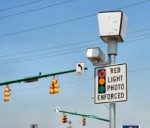Red-light cameras may increase accidents

Drivers could end up paying for more than traffic tickets when they run red lights with cameras attached to them, USF researchers found.
Researchers at the College of Public Health say red-light cameras are linked to an increase in traffic accidents, injuries and insurance premiums, despite various studies saying otherwise.
According to the study, drivers who recognize red-light cameras slam on their brakes during yellow lights to avoid tickets, resulting in rear-end collisions.
Professor Etienne Pracht, one of the researchers, said the timing on yellow lights is sometimes shortened at intersections with cameras so that more drivers receive tickets.
“Yellow becomes a little more like red,” he said. “The signal no longer means the same thing to all drivers. Those that have received tickets will brake violently to avoid another, and the person behind them who is unaware of the camera won’t expect that.”
However, a study by the Insurance Institute for Highway Safety (IIHS) in California said red-light cameras reduced front-to-side collisions at intersections by 32 percent overall.
IIHS admits that rear-end collisions increase with red-light cameras, but still thinks they are beneficial. The Federal Highway Administration supports IIHS with a study of 11 cities showing that the economic costs of front-to-side collisions exceeded those of rear-end collisions.
The USF study found IIHS’s study flawed because it included data from intersections without red-light cameras.
University researchers recommend alternatives to red-light cameras such as lengthening yellow lights’ times, reducing speed limits near traffic lights and improving the visibility of older traffic lights.
“Even if yellow lights last an extra second, that’s more time to clear an intersection,” Pracht said.
Whether Florida needs red-light cameras is questionable. Researchers in the study said injuries from red-light running accidents have steadily decreased since 1998.
At least seven citations for red-light running resulting in a traffic accident have been issued on campus by University Police since 2001, according to activity reports. Three of the accidents occurred at the Palm and Laurel intersection, two at the Holly and Magnolia intersection and two near parking lots.
According to Florida statutes, red-light camera evidence alone isn’t enough to put points on a driver’s record. However, local governments are allowed to mail civil infractions costing $125.
Pracht said red-light cameras could also mean higher insurance premiums. Even if drivers don’t get points on their records, the civil citations could make Hillsborough County seem like a more dangerous place to drive.
The study was published in the Florida Public Health Review one day after county commissioners agreed to allow the Hillsborough County Sheriff’s Office to install ten red-light cameras at the most dangerous intersections in the area.
“It’s unlikely that cameras will be placed on campus,” Col. Greg Brown said.
Pracht said the purpose of the study was to find ways to reduce accidents, not attack red-light cameras.
“What we’re interested in is preventing accidents in the first place,” he said.





